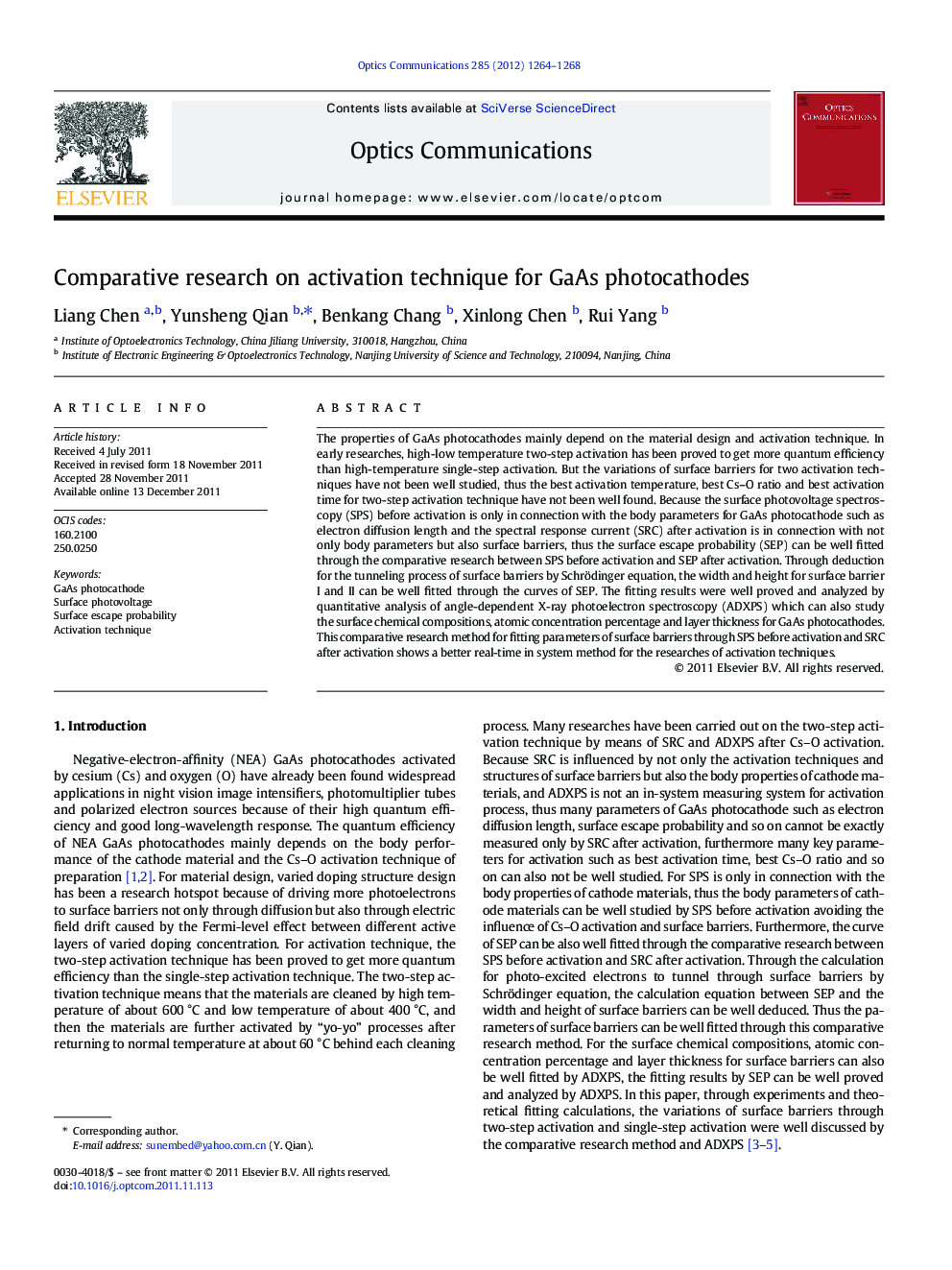| Article ID | Journal | Published Year | Pages | File Type |
|---|---|---|---|---|
| 1536871 | Optics Communications | 2012 | 5 Pages |
The properties of GaAs photocathodes mainly depend on the material design and activation technique. In early researches, high-low temperature two-step activation has been proved to get more quantum efficiency than high-temperature single-step activation. But the variations of surface barriers for two activation techniques have not been well studied, thus the best activation temperature, best Cs–O ratio and best activation time for two-step activation technique have not been well found. Because the surface photovoltage spectroscopy (SPS) before activation is only in connection with the body parameters for GaAs photocathode such as electron diffusion length and the spectral response current (SRC) after activation is in connection with not only body parameters but also surface barriers, thus the surface escape probability (SEP) can be well fitted through the comparative research between SPS before activation and SEP after activation. Through deduction for the tunneling process of surface barriers by Schrödinger equation, the width and height for surface barrier I and II can be well fitted through the curves of SEP. The fitting results were well proved and analyzed by quantitative analysis of angle-dependent X-ray photoelectron spectroscopy (ADXPS) which can also study the surface chemical compositions, atomic concentration percentage and layer thickness for GaAs photocathodes. This comparative research method for fitting parameters of surface barriers through SPS before activation and SRC after activation shows a better real-time in system method for the researches of activation techniques.
